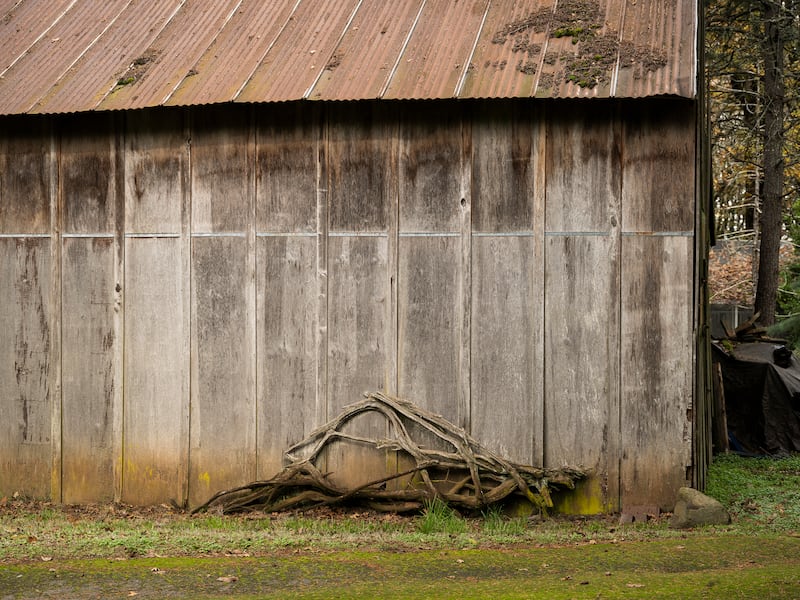An hour south of Portland, a farm lies amid rolling meadows, shaded by guardian oaks. It doesn’t look like a battlefield, but it is, and it’s the first of many.
Oregon’s farms and fields are becoming combat zones in the expanding war between preservation and development.
For years, homebuilders were kept at bay by Oregon’s Senate Bill 100, passed in 1973 to keep the Willamette Valley from looking like Arizona’s Salt River Valley, where Phoenix and its suburbs sprawl. Now, with Oregon facing a shortage of some 140,000 houses, and people sleeping on the streets, the tide is turning in favor of developers for the first time in 50 years with help, ironically, from a liberal governor.
“There has been a seismic shift in Oregon because of affordability,” says Mark Dane, a development planner who’s been working in the state for 33 years.
As speaker of the Oregon House of Representatives, Tina Kotek pushed through legislation in 2017 that made it easier for developers to slash red tape and get houses out of the ground by letting them claim exemptions from vague local housing codes. Kotek has continued that work as governor, declaring a homelessness state of emergency and pledging to build 36,000 houses a year, up from an anemic 20,000 during each of the past five.
That commitment has dimmed Kotek’s star power among environmentalists and made a progressive Democrat the unlikely ally of developers.
“The governor, to her credit, recognizes the obvious, which is that we’ve been underproducing housing for about a decade,” says Dave Hunnicutt, president of the Oregon Property Owners Association. “The process is broken. We need more dirt.”

Critics say Kotek, in her haste, risks saddling Oregon with treeless subdivisions, slapped up with materials that won’t stand the test of time but remain stubbornly out of reach in price for the people who need them most.
“I’m all for getting housing built,” says Carrie Richter, a land use lawyer in Portland who served eight years on Portland’s Historic Landmarks Commission, the last two as chair. “I agree we are behind. But removing regulations and letting the market do it is not going to work. You’re going to end up with high-end, overstuffed McMansions that won’t move the needle in responding to affordable or midrange housing demand.”
One of the bloodiest battlefields in this widening war lies just 4 miles from the state Capitol in Salem. It’s a 30-acre parcel of prime farmland caught in a bitter family feud among wealthy heirs to a potato chip fortune and their in-laws. Some family members—the richest ones, ironically—want a big payday and tract housing. Others long to preserve the land, the trees, and their memories.
The Battle of Meyer Farm is a sneak preview of the fights that can be expected in a state that touts livability—and now doesn’t have enough homes for all the people who have flocked here for just that.
“We have to break down the barriers that are keeping housing from being built,” Kotek said on her first day in office in January. “We have to have all kinds of housing at all levels of affordability.”
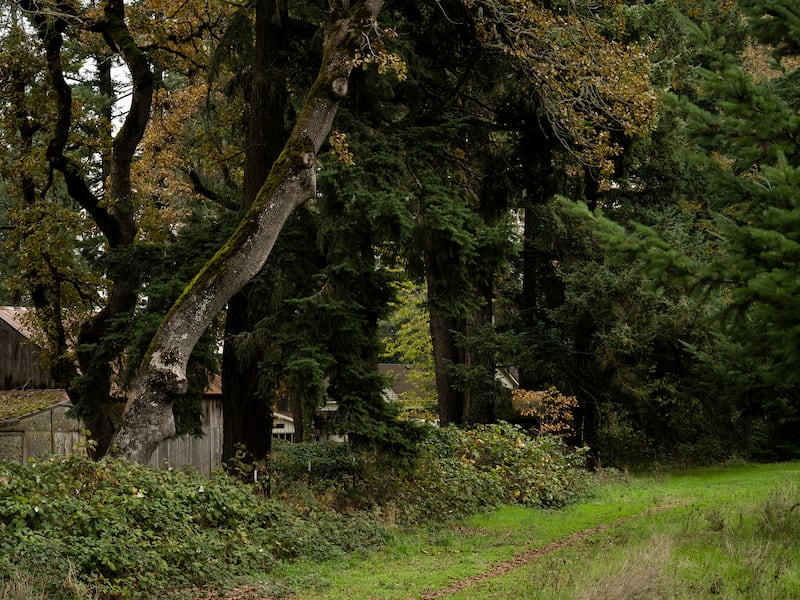
This story starts with Oregon white oak trees.
At one time, millions of such oaks spread across a Northwest savannah, dropping acorns that the Kalapuya people pounded into meal. But after centuries of development, 97% of the oaks in the Willamette Valley are gone, and conservationists are scrambling to save the ones that remain. There are whole groves of white oak on the Meyer Farm, and some of the giants there are centuries old.
After the Donation Land Claim Act of 1850, an Oregon Trail homesteader named Joseph Waldo grabbed the property and became a successful farmer and a pillar of Salem society, according to a history of the Meyer Farm commissioned by the family. The property changed hands more than once before ending up in the possession of Henry Meyer, a World War II veteran who came home to Oregon with a Purple Heart and bought the spread in 1947.
Meyer was a renaissance man. He became an interior decorator to the Salem gentry, including Gov. Mark Hatfield. At the farm, he and his wife, Marian, grew hay and Christmas trees, raised horses and llamas, and brought up six children.
The Meyer Farm is exactly what Gov. Tom McCall and state Sen. Hector Macpherson Jr. (R-Corvallis) sought to protect when they passed Senate Bill 100 in 1973, creating Oregon’s unique system for land use planning. McCall and Macpherson feared that Oregon would end up like Southern California, where tract houses were leveling orange groves. Addressing the Legislature in 1973, McCall derided “sagebrush subdivisions, coastal condo-mania, and the ravenous rampages of suburbia.”
SB 100 required every city and county to prepare a land use plan in accordance with 10 land use goals (since expanded to 19), including preserving farmland, forests, and natural wonders and setting aside enough land for housing.
Even though the goals carry equal weight under the law, builders have long said that housing loses out to farms and forests, and that their opponents can thwart development by taking action at the local level, a right that is enshrined in the very first land use goal: “the opportunity for citizens to be involved in all phases of the planning process.”
Fans of SB 100 say citizen involvement, though messy, is crucial.
“One of the things that makes Oregon Oregon is that we have land use planning around communities,” says Christine Lewis, a councilor at Metro, the Portland regional government. “Land use planning is community planning. In no other state would you see green acreage between Salem and Portland.”

Many of the Meyer kids made good. Tim Meyer graduated from the University of San Francisco in 1964 with a philosophy degree, then picked up another one in international finance. He moved to New York, became a banker, fell in love with an Englishwoman, and decamped to London in 1980.
At home in Salem for a visit, Meyer sampled a potato chip that one of his nieces had purchased from a guy in a van at the University of Oregon. The snack dazzled him. He got in touch with Cameron Healy, the chip’s maker, and helped him turn his small company into a behemoth called Kettle Foods, in part by taking the product to snack-crazed England, where they opened a factory in 1989.
Healy and Meyer sold the company in 2006 for about $300 million, according to a Reuters report, becoming fabulously wealthy. Even so, Meyer returned to the farm almost every summer, dragging his kids from posh West London, family members say, to learn the rhythms of rural life that he loved.
Meyer’s siblings did well, too. John graduated from Georgetown University and became an executive at ExxonMobil in Brazil. James established a successful architecture firm in Portland. Peter became news editor for Life magazine and an author of books, including The Yale Murder: The Compelling True Narrative of the Fatal Romance of Bonnie Garland and Richard Herrin, in which one Ivy Leaguer kills another with a hammer. Mary Ann Meyer Santana co-founded Portland’s Run for the Arts fundraiser in 1977.
Molly, the youngest of Henry’s children, lived on the farm and ran a garden shop out of a glass barn called, appropriately, the Glass Barn. For decades, she provided all the interior plants at Mahonia Hall, the governor’s mansion.
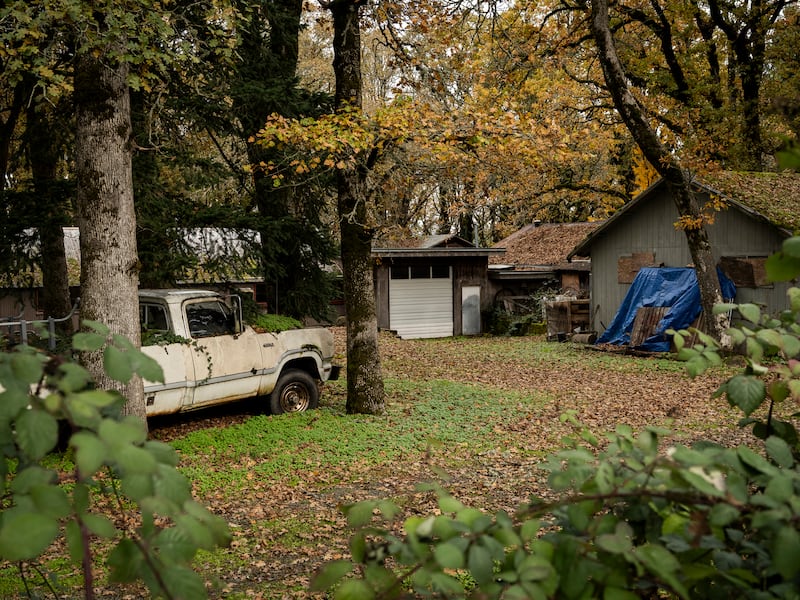
The family got along, mostly, until Tim Meyer, who’d been keeping the farm afloat with his chip riches, became terminally ill with prostate cancer. “Unfortunately, I am not available for further conversations on this issue,” Meyer wrote in one of his final emails. “May the Force be with you resolving these issues and the future of the beautiful farm.”
Meyer died in April 2018 at 75, and the family spread his ashes at the farm. Then the real fight began.
Some of the family members wanted to sell. Among them was Jane Meyer, Tim’s London-based widow, who claims the trust owes her $2.3 million for loans her husband made to maintain the farm over the decades. Molly Meyer, meantime, sought $678,000 for “sweat equity” that she put into the farm and the Glass Barn.
Others, including Peter Meyer, the journalist, wanted to keep it in the family.
“My poor dead father and mother worked so hard to make this place the garden that it became,” Meyer, 74, said in a telephone interview from his home in Hudson, N.Y. “The fight has destroyed the family, but the farm is still a beautiful place. The bulldozers have not run over it, and the trees are still standing, and it can regenerate itself.”
Peter says Molly and Ian put the farm on the market in April 2018 without everyone’s consent. In August 2020, Portland developer Marty Kehoe came along and agreed to buy 24 acres for $3 million, leaving the farmhouse, 5 acres and a lot of oaks to the family.
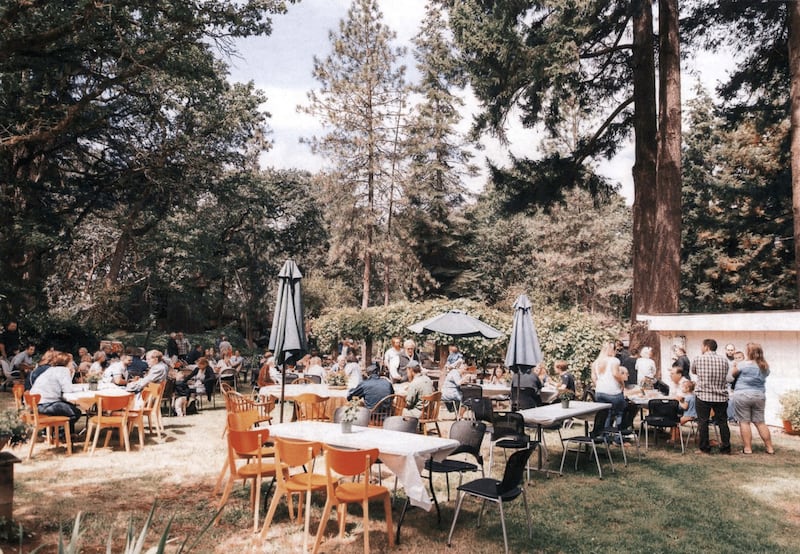
Marty Kehoe has built all kinds of housing all over Oregon. He’s built apartments in Portland and tract homes in Hillsboro. He’s bought and sold the Governor Hotel (now called Sentinel) and the Wapato Jail.
Like the Meyers, Kehoe, 62, has deep roots in Oregon. He’s a fifth-generation Portlander who, after getting a bachelor’s degree in management from George Fox University in Newberg, followed his father into the homebuilding business.
Oregon real estate has been good to Kehoe. He lives in a five-bedroom house in Dunthorpe, Portland’s wealthiest enclave. He spends his free time skiing and chilling at his house in Gearhart, a favorite coastal haven for Portland gentry. He’s a player in politics, too, hanging around with Karl Rove and the Bush family.
And for Kehoe, the bill that Tina Kotek pushed through the Legislature in 2017 made the Meyer Farm tantalizing.
Back then, Kotek was House speaker and she used her power to shepherd a bill that made it easier for developers to get around regulations that frustrate groundbreaking. The bill, now a law, said that “a county may not deny an application for a housing development located within the urban growth boundary if the development complies with clear and objective standards, including but not limited to clear and objective design standards contained in the county comprehensive plan or land use regulations.”
It also redefined the concept of “needed housing” as “all housing [types] on land zoned for residential use or mixed residential and commercial use that is determined to meet the need shown for housing within an urban growth boundary at [particular] price ranges and rent levels.”
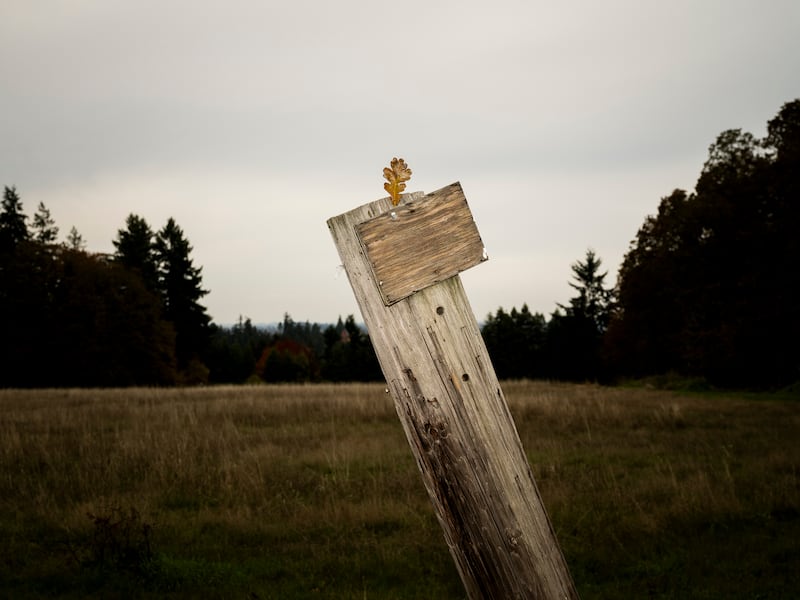
The word “all” got added to Kotek’s House version, and that one small word opened up big opportunities for builders of tract homes, says Richter, the land use lawyer.
Before, developers of single-family subdivisions like Kehoe could get stuck in a thicket of regulations governing everything from the opacity of hedges to the steepness of berms. Now, they can claim exemptions from any rule that isn’t specified to the foot or inch, because big tract homes are “needed housing,” according to the state, and their production must be expedited.
During debate, affordable housing advocates said Kotek’s bill would do little to increase production of dense, affordable housing and would instead open the door to McMansions.
“House Bill 2007 claims to be an affordable housing supply bill, yet it weakens land use regulations statewide without a mandate that new construction be affordable,” housing advocate M.K. Hanson said in testimony on the bill.
Hanson might as well have been describing the Meyer Farm. Over and over in his 117-page application, Kehoe claimed exemptions from city code to build large homes on 4,000-square-foot lots by quibbling with single words or phrases that he says are subjective.
Was there “safe and convenient” bike and pedestrian access to the subdivision? Kehoe said he didn’t have to answer because “safe and convenient” are “subjective, undefined terms that allow for discretion.” He made the same argument for ignoring dozens of rules about fences, walls, hedges and other subdivision features.
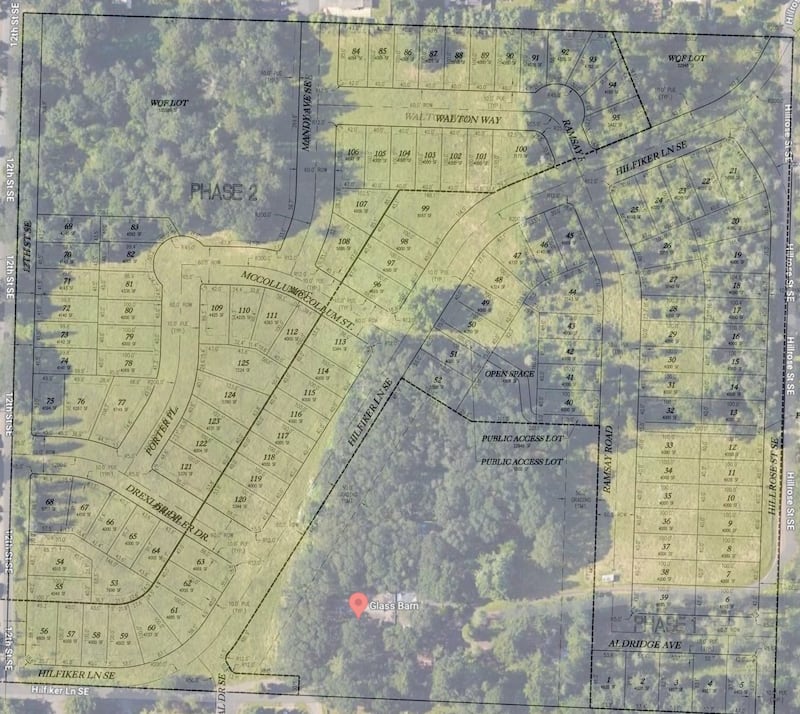
Kehoe became part of the Meyer melodrama a year or so after the farm’s trustees put it on the market.
The trustees were Molly Meyer, the Mahonia decorator, and Ian Meyer, Tim’s son and heir to a chunk of the potato chip fortune. In August 2019, Peter Meyer filed suit in Marion County Circuit Court, alleging that Molly and Ian had abused their powers as trustees by agreeing to sell the farm to Kehoe.
“I never thought that this would be happening within my own family,” Meyer says. “All I did was call in a robbery in progress. And the robbery is still going on.”
Ian Meyer didn’t return phone messages or email seeking comment.
Molly Meyer declined to comment.
Plenty of clans splinter when an older generation dies, leaving wealth and property to the heirs. It’s how wealthy families often go broke. The story of the Meyers is no different. The dispute has drained the trust of almost all assets but the farm, and it’s falling into disrepair because the judge has prohibited any family members from visiting, save for one inspection. A caretaker shoos away homeless people but does little else to maintain it.
What makes this asset different, however, is how strongly many people feel about the grove of oaks inside it.
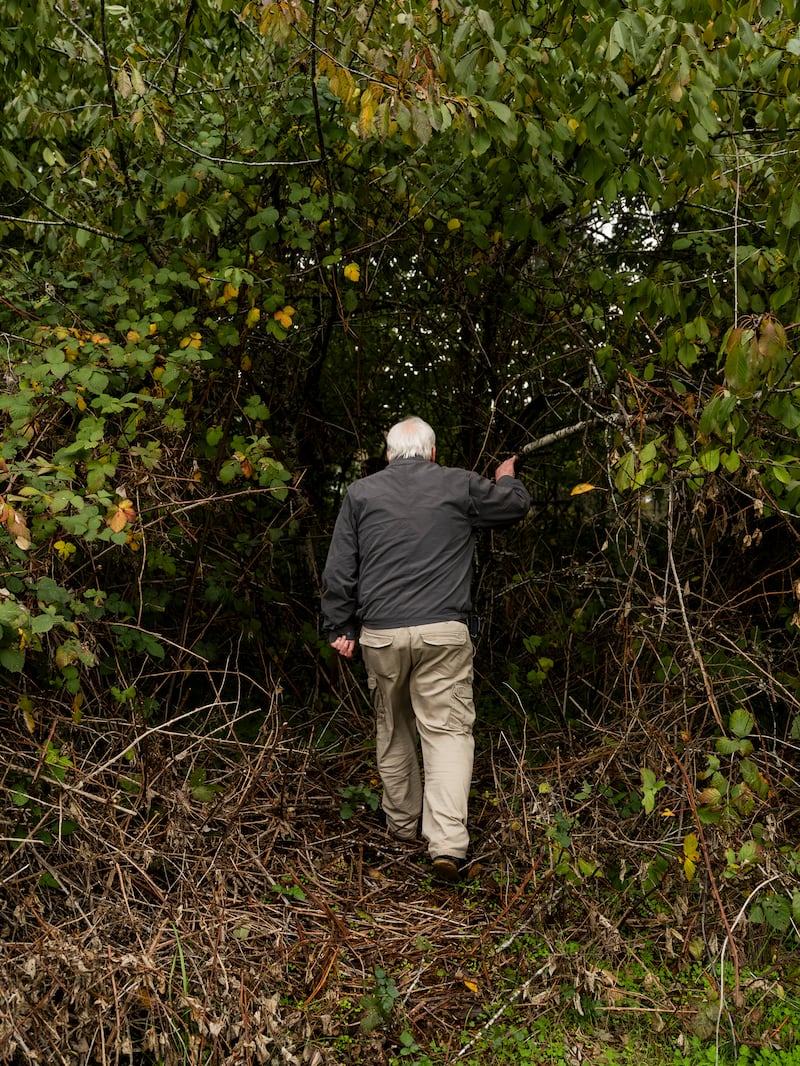
After Kehoe submitted his plans in July 2021 to cut down hundreds of trees, including many Oregon white oaks, and build single-family homes, public comments poured into the city of Salem.
Among the leaders of the resistance is Geoff James, 82, a British-born architect who came to Salem in the 1970s to design buildings for Chemeketa Community College. These days, he’s the land use chair of the Morningside Neighborhood Association and a self-professed “tree hugger.”
“It’s a jewel in our neighborhood,” James says, walking through a city park one day that abuts the Meyer Farm.
Kehoe says he’s done everything by the book, and more, especially on trees.
“I am a fifth-generation Oregonian, and as an Oregonian, I think it’s safe to say that we all love trees,” Kehoe wrote in a letter to the Salem City Council in February 2022. “They are not only good for the environment, but in my profession, they also make a new subdivision look great. I always try to take down as few trees as possible and then replant as many as possible.”
So far, Kehoe and the pro-development faction of the Meyers have defeated every effort to deny him permits, but it’s taken time.
And the pro-farm Meyers and the neighbors aren’t giving up. Filings in Salem indicate that Kehoe plans to sell some or all of the subdivision to Texas-based D.R. Horton, which stamps out houses like Hostess pumps out cupcakes. But he can’t do that without clear title to the property, and the title isn’t clear because some members of the Meyer family argue that the trust has no right to sell it.
The judge in the case plans to hold a hearing on that matter Dec. 6.

If Gov. Kotek has her way, many more developers will get clearance to build on similar plots of land, with less red tape.
Shortly after becoming governor, Kotek formed the Soviet-sounding Housing Production Advisory Council. It’s scheduled to issue its draft plan for getting more houses out of the ground next month, and that plan is expected to shape more pro-housing legislation from Kotek in the short legislative session in February.
Environmentalists aren’t folding their tents just yet. In July, a broad coalition attacked a Kotek-backed bill that would have curbed local governments’ power to deny residential developers variances from land use codes inside urban growth boundaries. Cities would have gotten a one-time window for expanding those boundaries, too. Kotek’s bill died. Parties on both sides expect the bill to return in 2024′s short session.
“The governor has been clear,” Kotek spokeswoman Elisabeth Shepard says. “We need more housing at all income levels, particularly homes that are affordable for low- and middle-income families, to address the state’s housing crisis. That’s why she’s prioritizing housing production in the upcoming legislative session. Builders need to be able to work within ‘clear and objective’ standards as established at the local level.”
Meanwhile, Kehoe says he never expected to be stuck in the planning stages three years after he agreed to buy the property. Since then, he has loaned the Meyer trust $500,000 to pay attorneys handling the family fight, and he’s likely out at least that much in legal fees of his own.
But, like the farm’s defenders, Kehoe is still all in. To avoid a property line fight, Kehoe agreed in October to stump up another $785,000 to buy all of the Meyer property, a court filing shows, including the farmhouse. Strangely, as part of the latest purchase, Kehoe would get everything owned by the trust, including Henry Meyer’s Purple Heart from World War II and lots of other family heirlooms.
“It’s unfortunate that sometimes these things drag out, but we aren’t required to close until all the appeals are finalized,” Kehoe says.
In short, Kehoe has time. That’s what Peter Meyer wants, for his family and the oaks. So far, so good, but Kehoe—and Kotek—remain keen to build.
